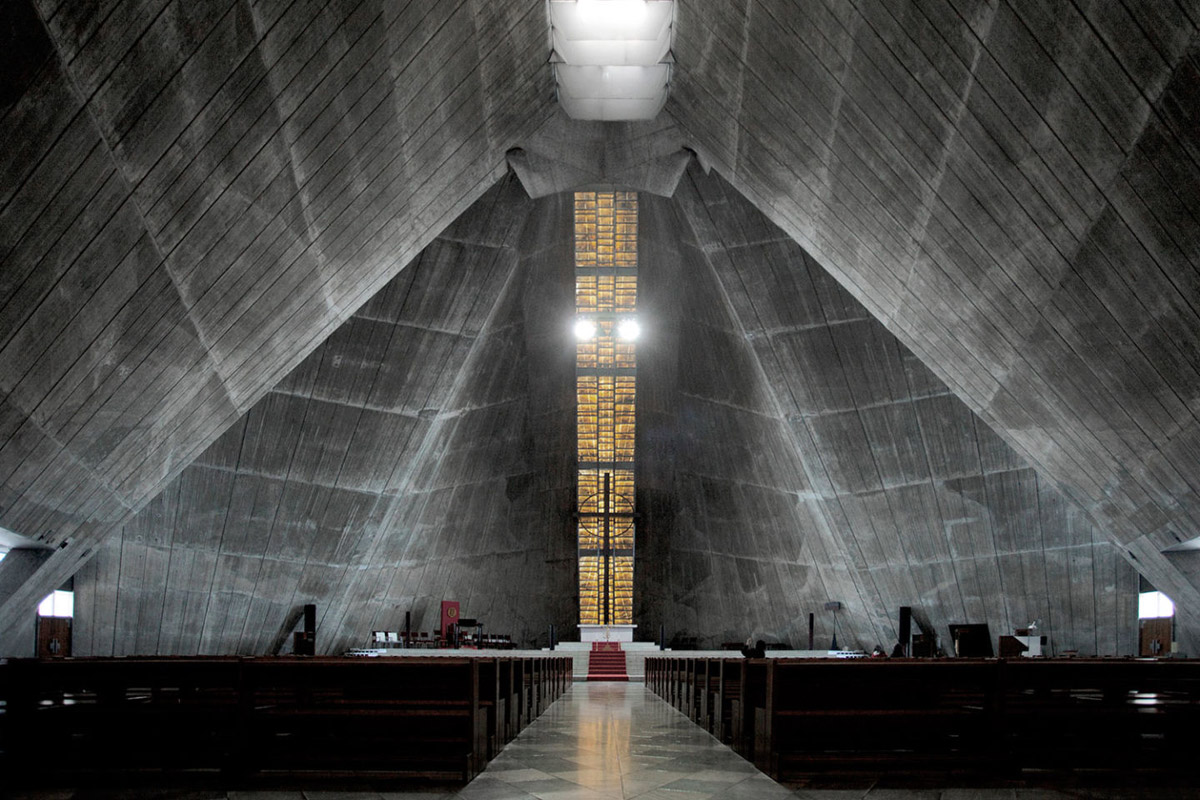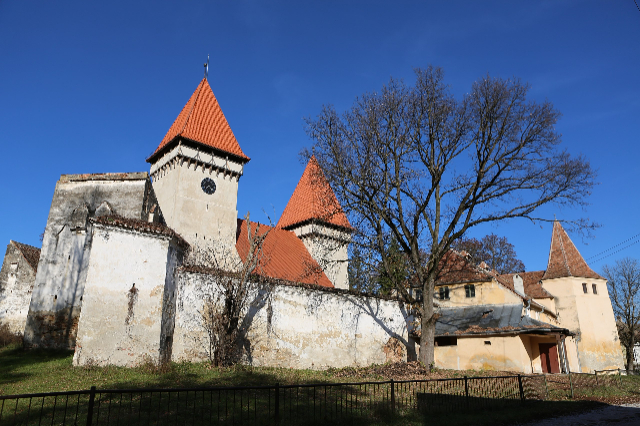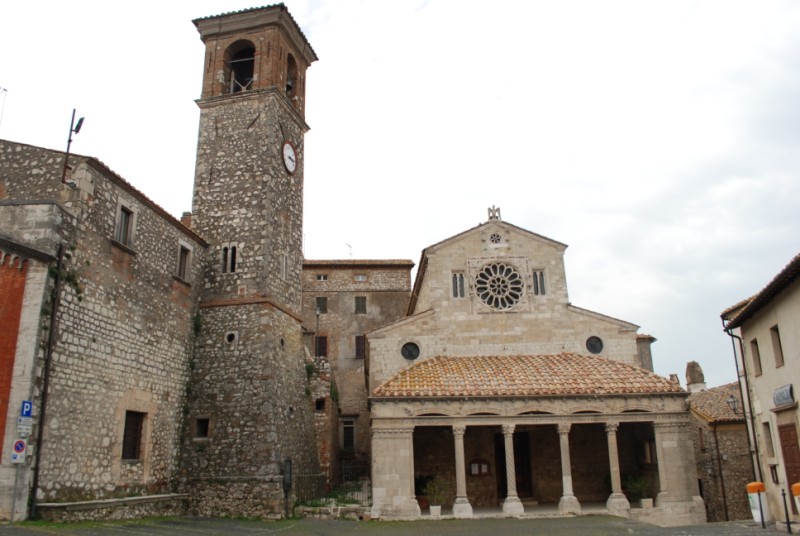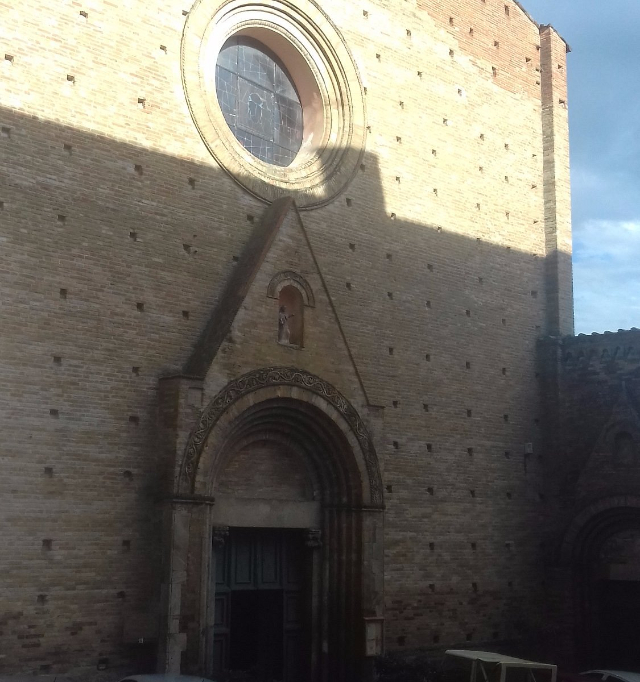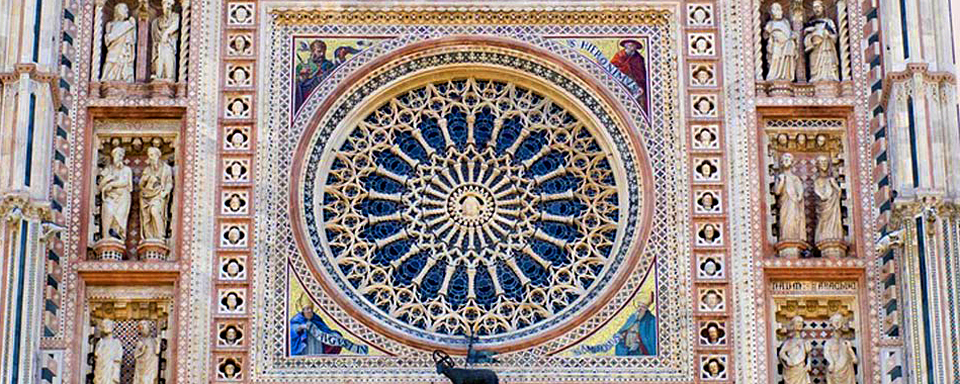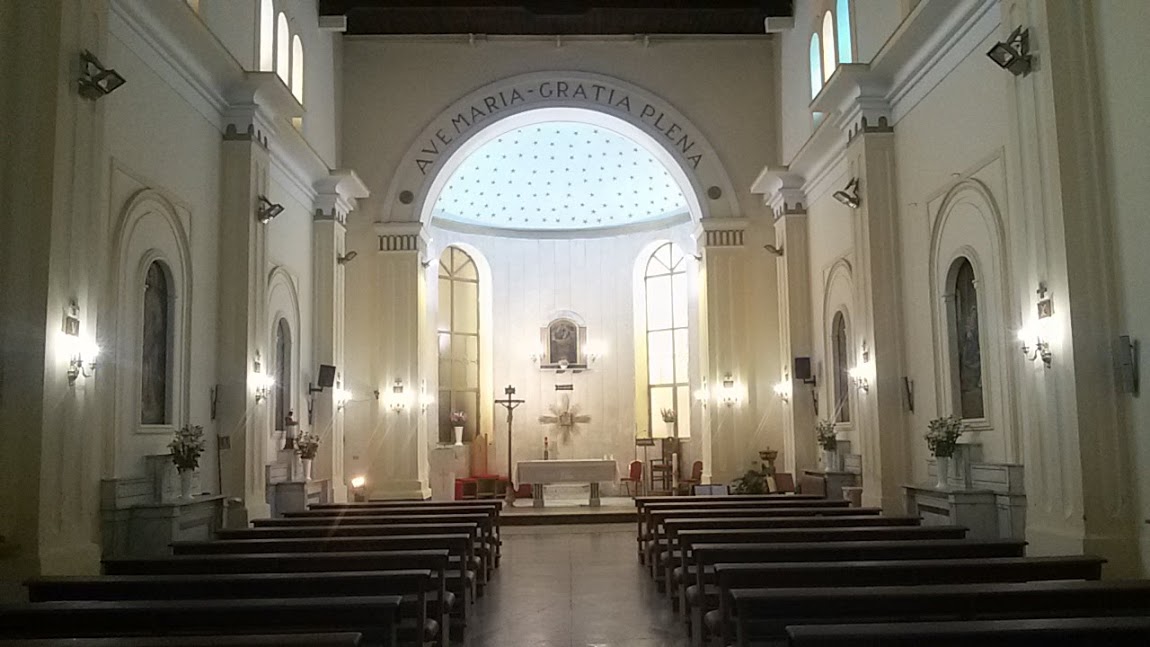The St. Mary’s Cathedral was built in 1964 and designed by Kenzo Tange to replace the old wooden cathedral, in gothic style, burnt during wartime. Tange’s project is both Modernist and Metabolist, abstract and symbolic, bright (polished exterior), and dark (rough interior). St. Mary’s Cathedral, located in the Sekiguchi neighborhood of Bunkyo in Tokyo, is the seat of the Roman Catholic Archdiocese of the Japanese capital. The layout of the building is in the form of a cross. Eight hyperbolic parabolas rise over this symmetrical and cruciform plan and open upwards to form a cross of light.
These two long and intersecting skylights between the shells in reinforced concrete continue vertically along the height of the four facades.This elaborate system of openings is responsible for the dramatic light effects within this impressive architecture. The high and tapering space between the concrete shells gets a mysterious dimness through these narrow skylights. The main rhomboid volume of the church is covered with corrugated aluminium plates on the exterior,giving the appearance of the building a sparklig brilliance when sunshine is reflected on the metallic surface. Seccondary constructions such as the baptistry and the baptismal font are added to the main building. The rectangular shapes and the construction in concrete blocks of these annex-buildings contrasts with the symbolic character of the cathedral. In a short distance from the main building is located the bell tower with a height of 61.6 m. Docomomo-japan has selected this building as one of the 100 most
important representatives of modern architecture in japan. In 2004 a large organ was istalled by the italien firm mascioni.
